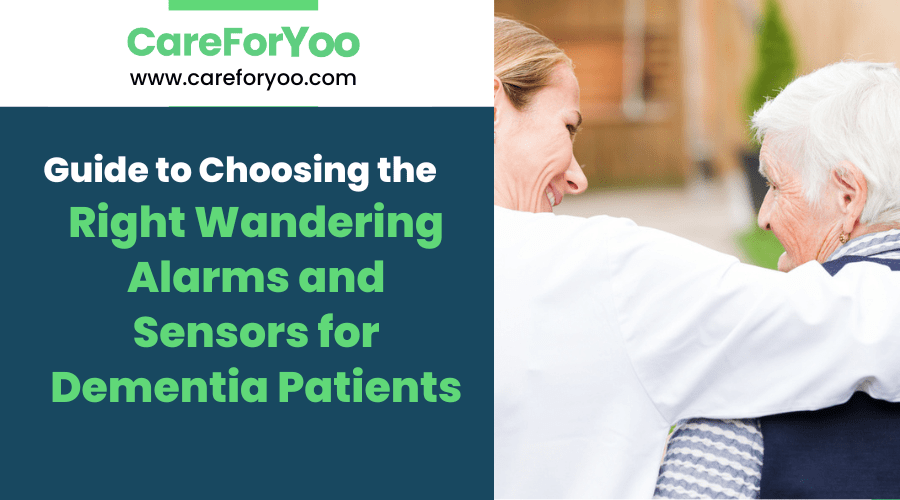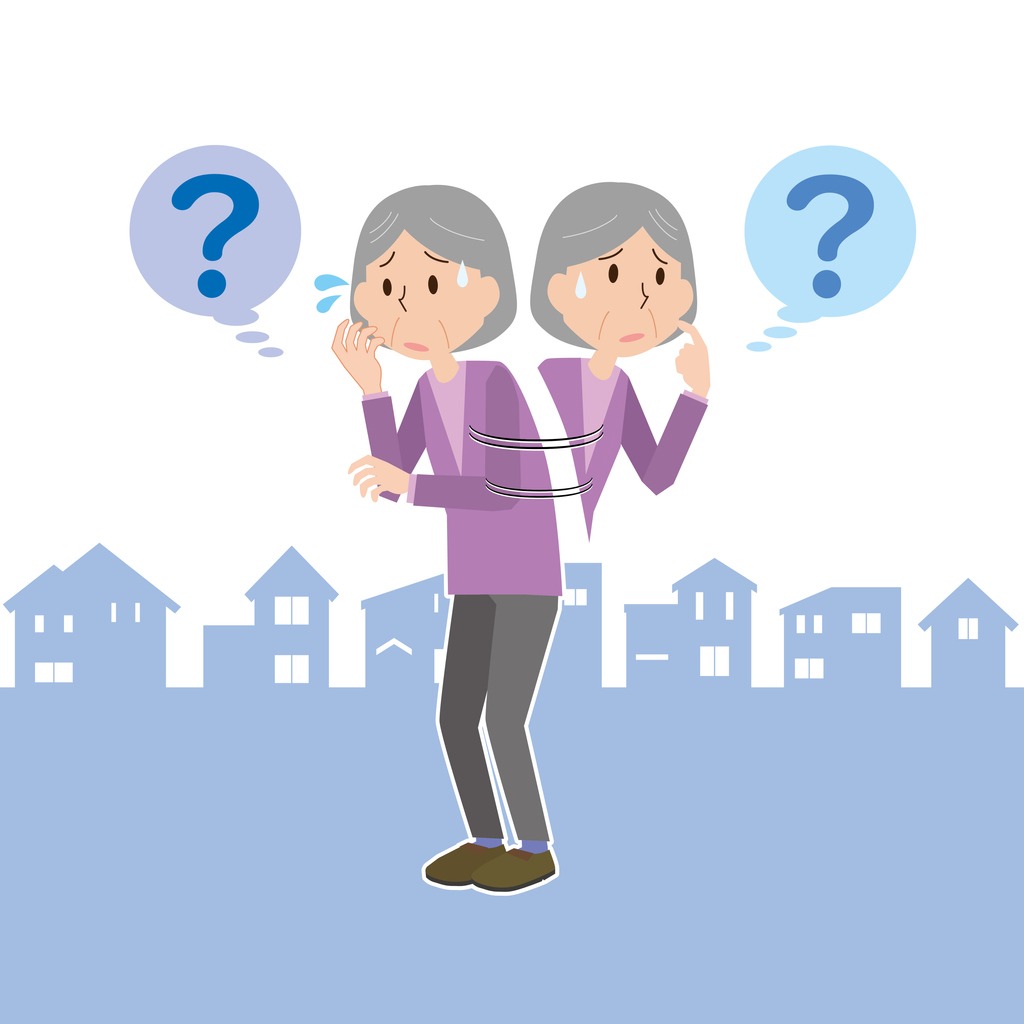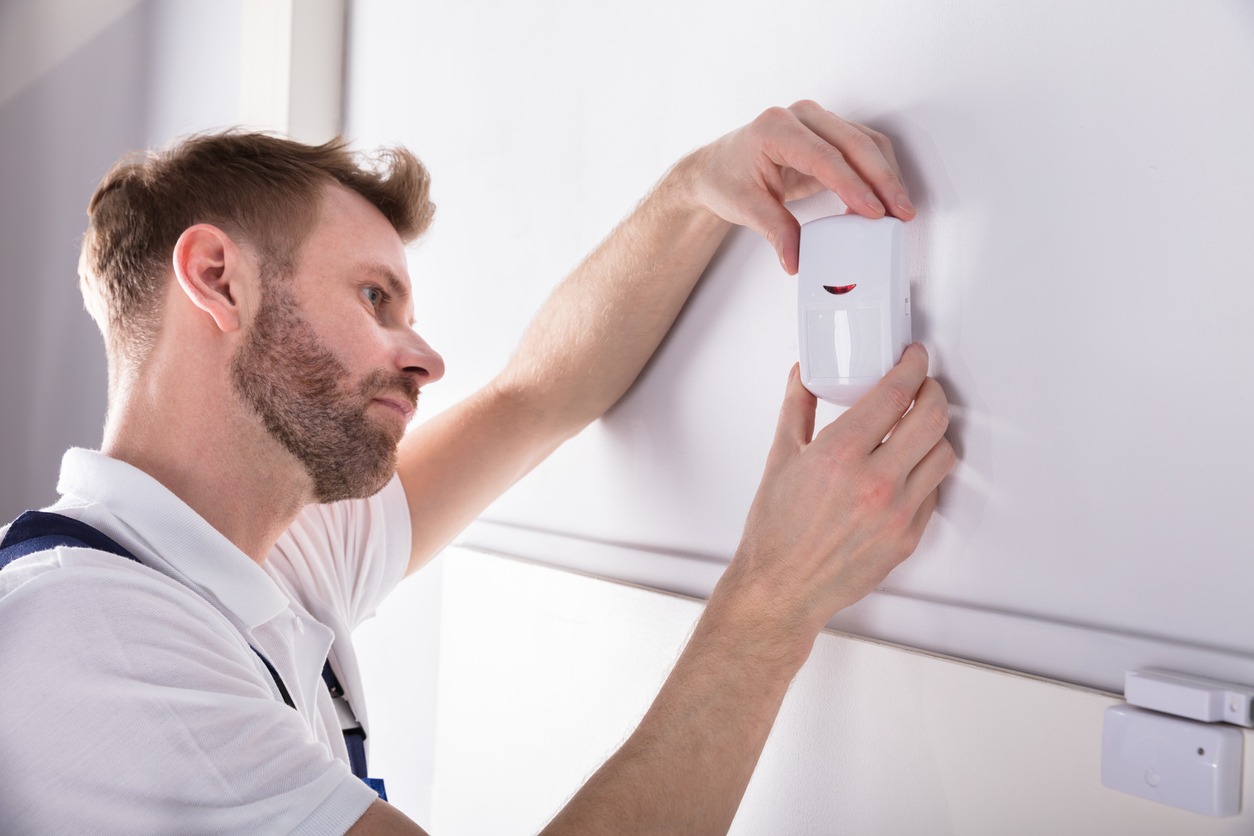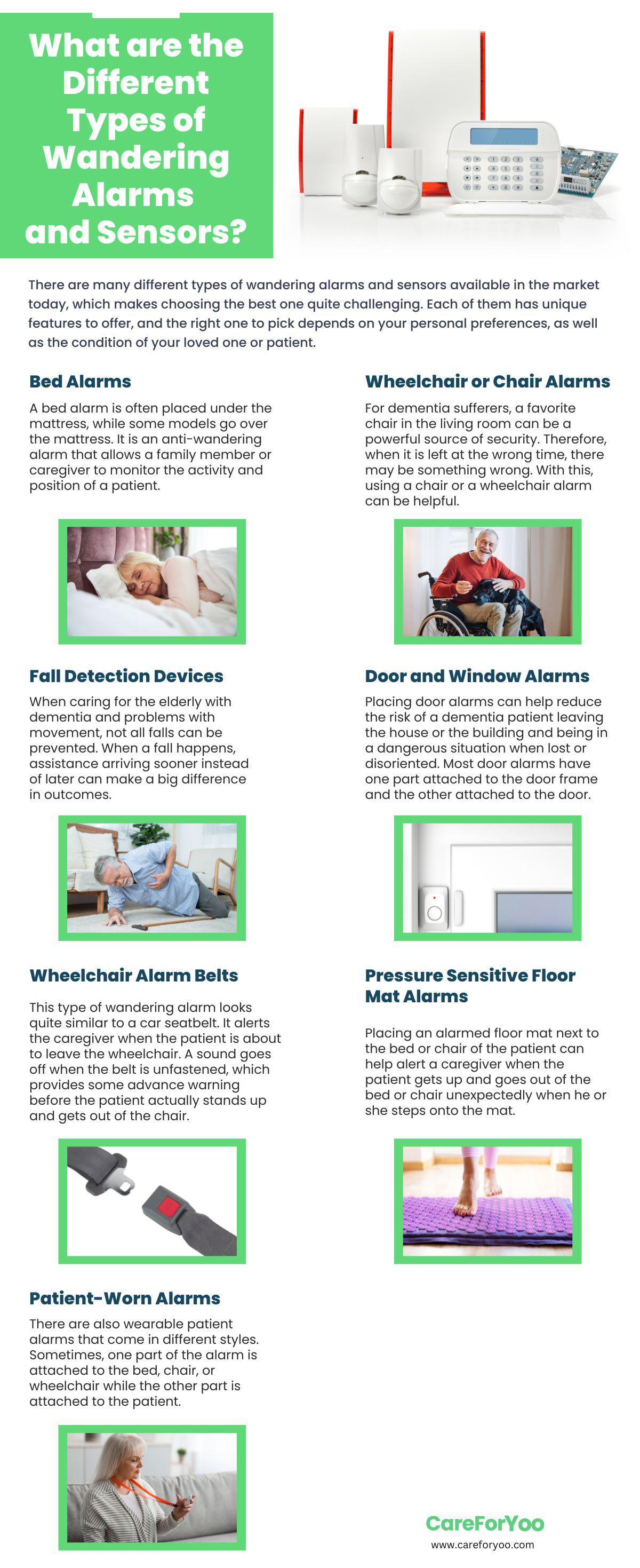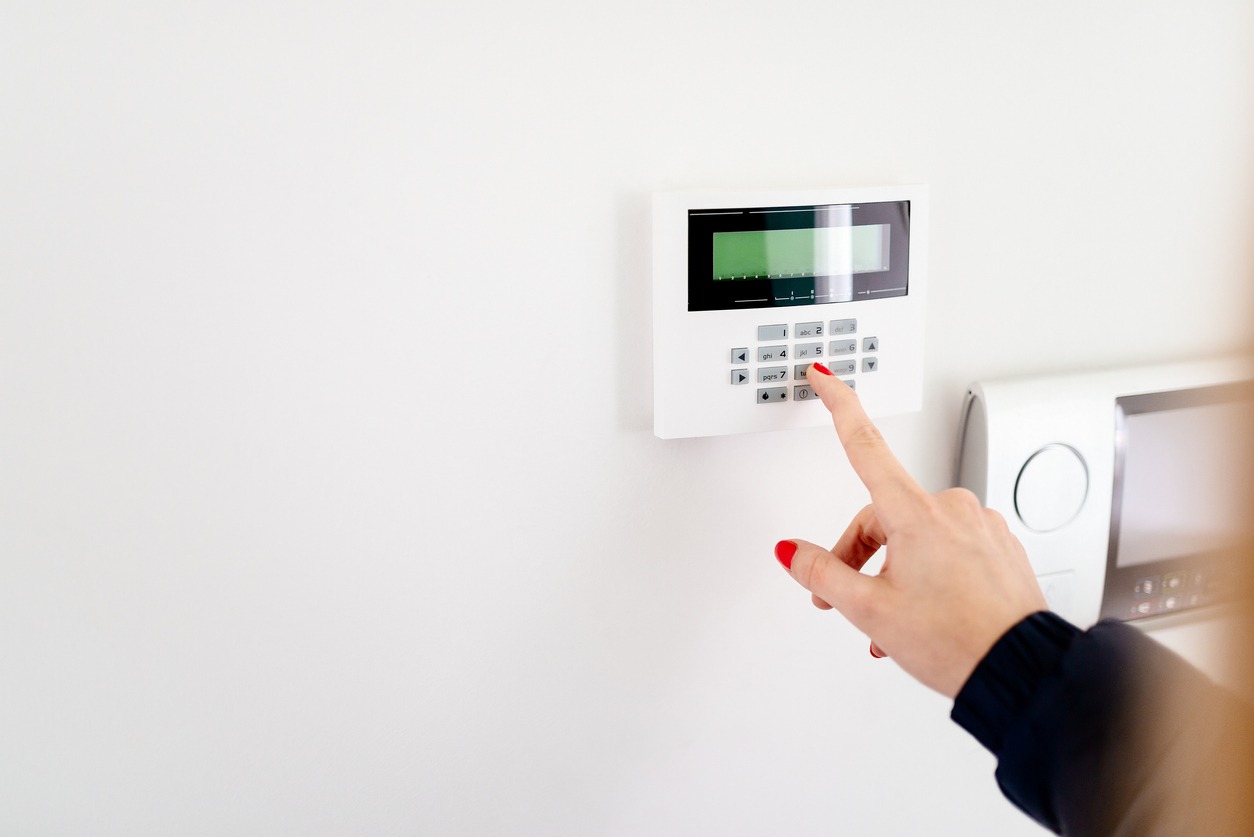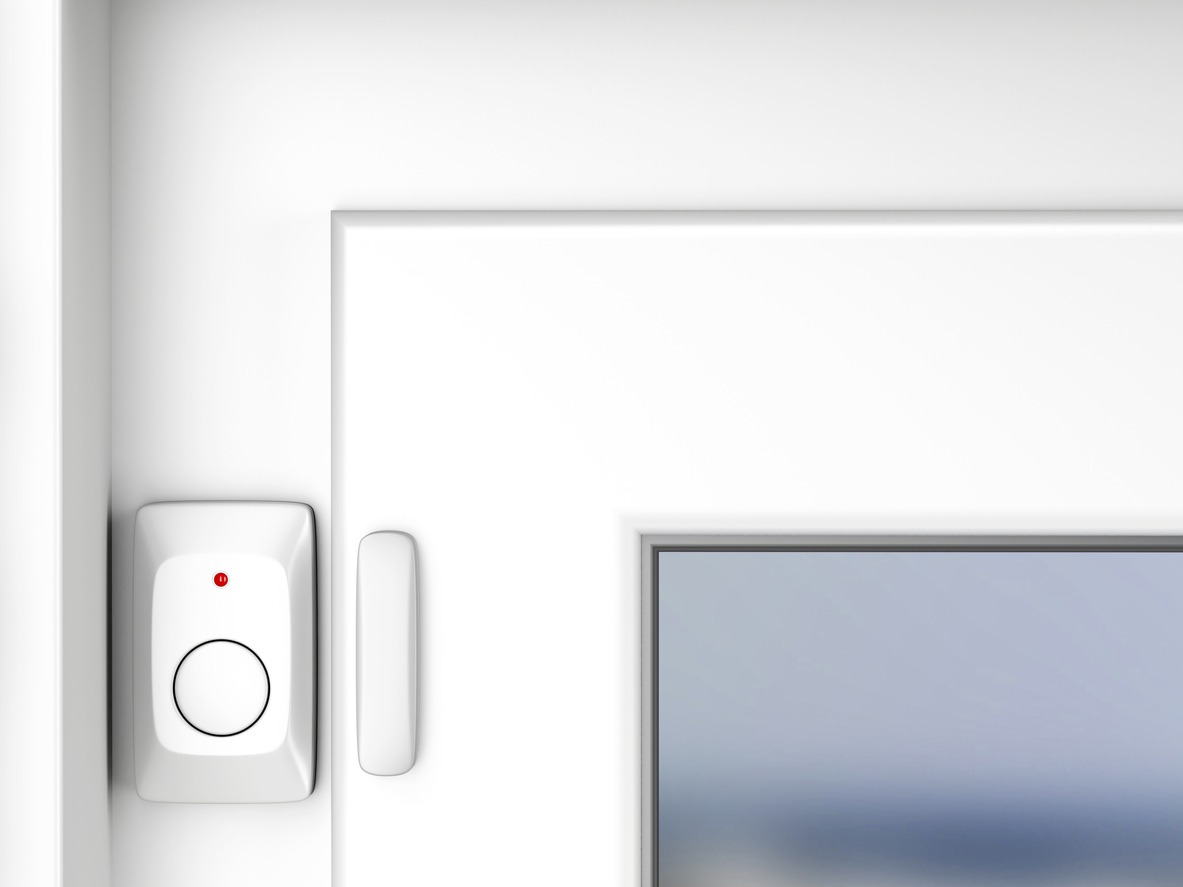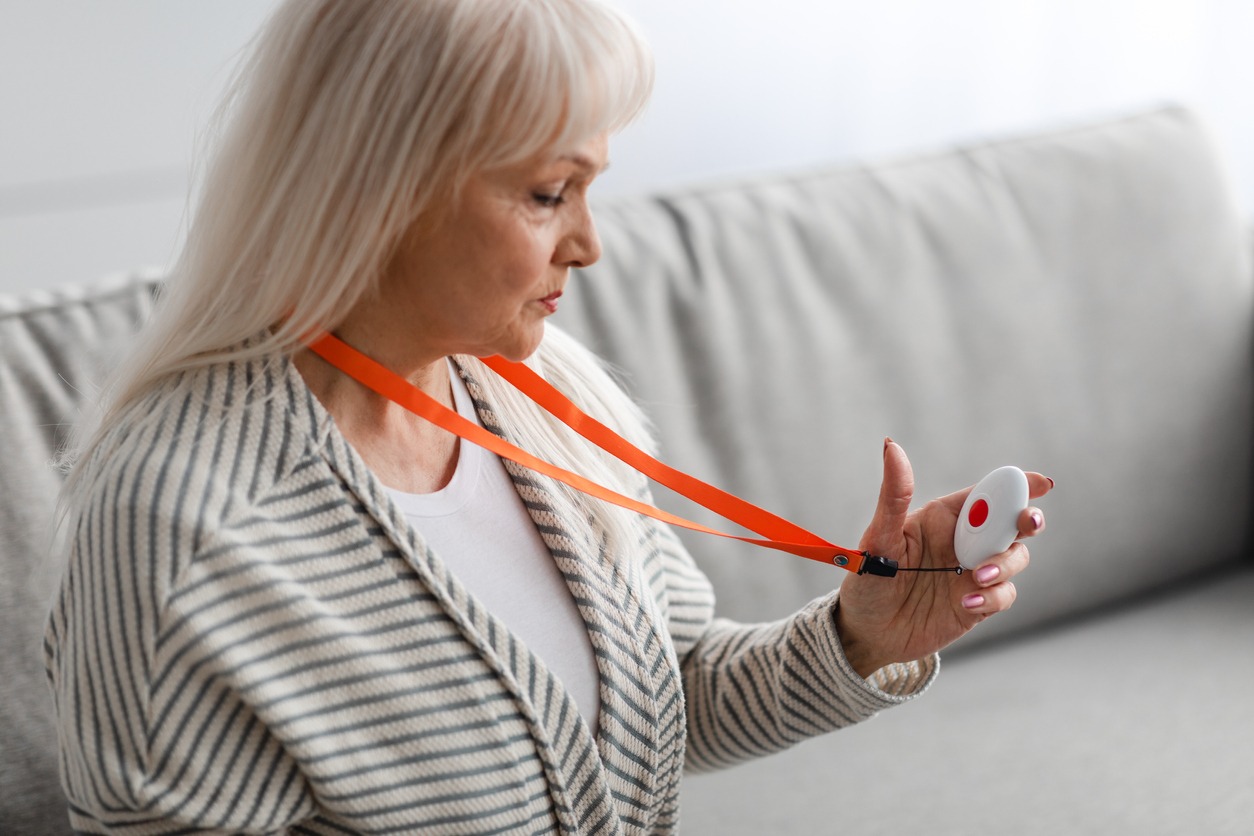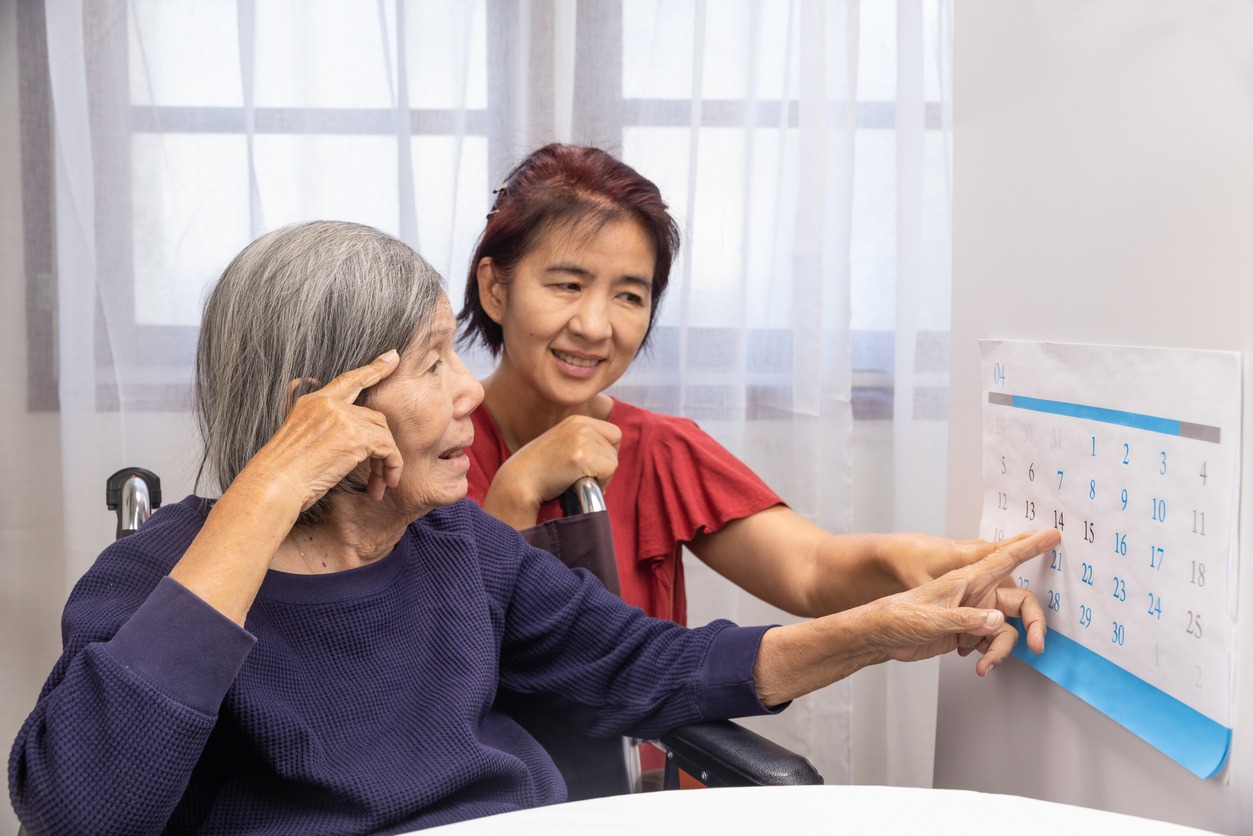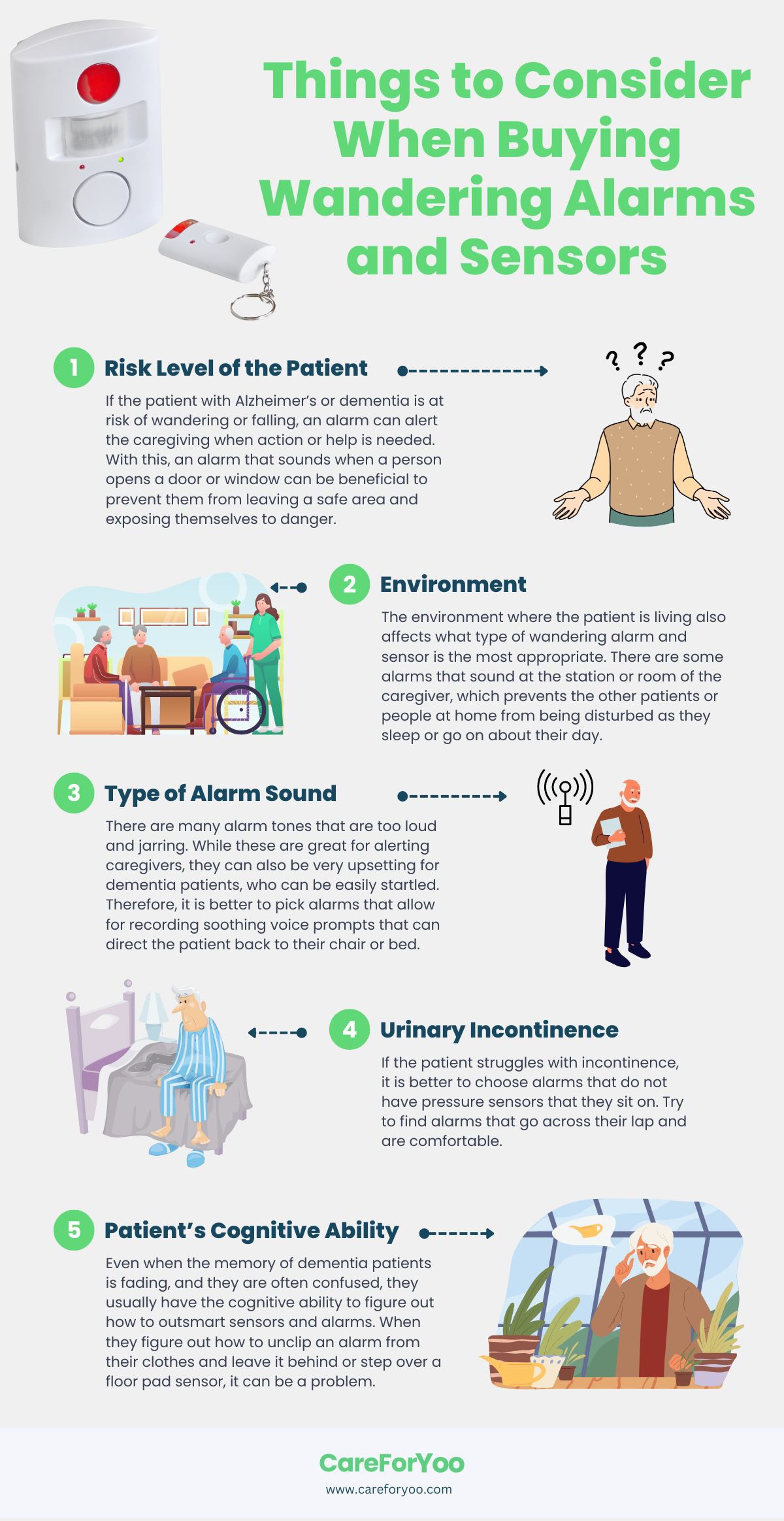If you have a loved one who has Alzheimer’s or dementia, or if you are a caregiver for someone with these conditions, you are probably aware that they have the tendency to wander away. It’s because wandering is a common behavior in patients with Alzheimer’s disease or other forms of dementia. When they start to show signs of wandering behaviors, they are at a high risk of wandering away and becoming lost, which is very distressing for family members and caregivers and dangerous for the individual.
The exact causes of wandering behavior are not fully understood. It may happen to people who are searching for something or trying to get back to a certain place that they remember, such as a job or a favorite place. However, there are also some who just wander or walk away because they feel restless or agitated.[1]
If your loved ones or patients with dementia often wander and you’re worried about them being lost, there are different ways that you can do to keep them safe and reduce the risk of wandering. One example is giving them meaningful activities to do throughout the day, particularly during the time that they usually wander. Reassuring them whenever they feel lost, abandoned, or disoriented may also help.[2] Aside from that, you may also use wandering alarms and sensors, which can notify you whenever they move around.
There are many safety alarms available for patients with dementia, and they come in various forms. But all of them are designed to alert a caregiver when a dementia patient moves unsupervised, which can lead them to get into an unsafe situation. If you are interested in getting one but unsure of what to buy, we are here to help you. In this post, we are giving you a guide to choosing the right wandering alarms and sensors.
What are Wandering Alarms and Sensors?
If your patient or loved one who has Alzheimer’s disease or a different type of dementia wanders and tries to leave your home or facility, one way to keep them safe is to place door alarms, as well as bed and chair exit alarms.[3] In addition to patients with dementia, these alarms and sensors are also used for those who struggle to get around and have an increased risk of falling. It’s because a lot of falls can occur when the elderly are moving from one chair to another or getting in and out of bed.[4]
Some might think that they can simply place other locking mechanisms like a latch high up the door. However, the downside of that strategy is when an emergency occurs, such as a fire, the person inside may not be able to escape safely out of the room or house.[3] Using wandering alarms and sensors allow the person to attempt exiting through the door, but they will also alert you to his or her need for assistance.
Wandering alarms and sensors are used to protect individuals from elopement and wandering. Whether the patients intentionally attempt elopement or simply wander around to find a door, those who are at risk of going out without the needed supervision may benefit from these technologies.
In addition to that, wandering alarms and sensors can also be used to alert others for assistance. For example, they can be placed on bathroom doors as they will sound when the door is opened, letting you or the caregiver know that your loved one or patient needs assistance in the bathroom.[3]
Benefits of Using Wandering Alarms and Sensors
Using wandering alarms and sensors come with many benefits, both for caregivers and patients. Below are some of them:
Fall Prevention
It is quite challenging for a caregiver or a family member to be at the side of the patient 24/7, as they may have other duties or tasks to do. If the caregiver is unaware that the patient is trying to leave the bed, chair, or room, it can lead to a dangerous situation. Therefore, investing in an exit alarm or sensor can help in reducing falls and accidents as you can always be aware whenever the patient moves around and might need help.[4]
Peace of Mind
The use of wandering alarms and sensors can also provide family members and caregivers peace of mind. With these technologies, you will be alerted when the patient has left their chair or bed or when they pass through a door. They will also let you know when the patient may need assistance but does not want to ask for help.
Improve Response Time
Most of the time, Dementia and Alzheimer’s patients wander at nighttime. Based on the Alzheimer’s Association, 6 out of 100 people with dementia will wander. Without any advanced security technologies, there can be a higher risk for wandering patients to become lost or leave the house or building without the caregiver knowing immediately. But with the use of wandering alarms and sensors, family members or caregivers will be alerted immediately, which improves the response time.[5]
What are the Different Types of Wandering Alarms and Sensors?
There are many different types of wandering alarms and sensors available in the market today, which makes choosing the best one quite challenging. Each of them has unique features to offer, and the right one to pick depends on your personal preferences, as well as the condition of your loved one or patient. There are some alarms and sensors that are attached to a piece of equipment or furniture, while some are attached to the patient.
The best patient safety alarm for your situation will send the right signal for a caregiver to intervene or remind the patient to stay put. These alarms and sensors can’t also be disabled by patients. To help you choose the right type of wandering alarms and sensors, below are the different types and what each of them offers:
Bed Alarms
A bed alarm is often placed under the mattress, while some models go over the mattress. It is an anti-wandering alarm that allows a family member or caregiver to monitor the activity and position of a patient. The sensors detect a reduction of pressure when patients get up and leave the bed. The bed alarm will go off when someone is no longer sitting or lying on the bed.[6]
The best thing about bed alarms is that they protect patients who are prone to bed falls, as they alert caregivers as soon as someone gets out of bed. It is also very simple to set up and use. However, the downside is that some bed alarms can easily go off if someone simply changes position, which sends a false warning. But choosing a good quality bed alarm can be helpful. Below are some examples that might help you in choosing the right one:
- Smart Caregiver Wireless Bed Alarm System: This is a bed alarm system that alerts caregivers when the patient gets off the bed. It is simply placed under the patient’s back or the buttock area underneath the fitted sheet. When the patient takes their weight off the sensor pad, the remote alert monitor will notify the caregiver with a sound. It works up to 300 feet. The pad is made of soft, latex-free vinyl with a foam interior, making it comfortable. It also does not make any noise inside the patient’s room.
- Val-U-Care Safety Monitor with Bed Exit Pad: This system comes with a safety monitor and a bed sensor pad made of soft vinyl, which is easy to clean. The safety monitor features an adjustable volume and low battery light. It uses 3 AA batteries to operate.
Wheelchair or Chair Alarms
For dementia sufferers, a favorite chair in the living room can be a powerful source of security. Therefore, when it is left at the wrong time, there may be something wrong. With this, using a chair or a wheelchair alarm can be helpful. These alarms feature a sensor that is pressure activated. When there is a decrease in pressure on the sensor from someone leaving the seat, the alarm will sound and alert to someone falling out or getting up from the chair. There are chair sensors or pads that are placed on top of the seat, while others are under the seat.[6]
The best thing about wheelchair or chair alarms is that they inform caregivers when a patient rises from the chair and possibly wanders into a dangerous situation. In addition, it also reminds patients who are confused to stay seated for safety. However, people who self-propel usually shift positions often in their wheelchairs, which may set off a false alarm.
Below are some examples of wheelchair or chair alarms to help you choose:
- Lunderg Chair Alarm System: This chair alarm system has a chair sensor pad that connects wirelessly using a handheld monitor. When the patient stands up, the alarm will sound or vibrate continuously. The pressure pad is easy to wipe clean and incontinence resistant. It also includes a portable pager with an adjustable volume. It also has an improved sensor to reduce false alarms.
- Secure Safety Solutions 14CSET-1Y Chair Alarm: This chair alarm system has an 80 dB alarm sound, a flashing alert light, and a tamper-resistant reset button. The alarm also reset when the patient returns to the sensor pad. The chair sensor pad is durable and comfortable to sit on. It is best for fall-risk patients who often attempt to exit a chair or a wheelchair.
Fall Detection Devices
When caring for the elderly with dementia and problems with movement, not all falls can be prevented. When a fall happens, assistance arriving sooner instead of later can make a big difference in outcomes. Fall detection devices act as personal alert safety systems which determine when a fall has occurred, connecting the user with help.
These devices also provide patients a button that they can push to summon help. But the device can also call for assistance on the user’s behalf if they are unable to do so. This type of equipment gives peace of mind to anyone with a loved one who is at risk of a fall. It also allows the patient to be independent while still being able to ask for help if needed. The only downside is that it needs to be worn at all times by the patients.[6] Below are some examples of fall detection devices to help you choose:
- SkyAngle911FD Automatic Fall Detection Device: This fall detection device can be placed on a keychain. It is waterproof, and even when it is dropped in the water, you can still talk through it. It only has one button to press to speak with 911. If it detects a fall, it will automatically call for help. It is always in 2-way speakerphone mode.
- Mini Guardian Medical Alert System: This is a mini alarm system that can be attached to a lanyard and worn as a medical alert necklace for elderly people. It is used by simply pushing a button. It connects patients to a live USA-based and trained operator at any time of the day.
Door and Window Alarms
Placing door alarms can help reduce the risk of a dementia patient leaving the house or the building and being in a dangerous situation when lost or disoriented. Most door alarms have one part attached to the door frame and the other attached to the door. When the connection between them is broken, an alarm will sound, indicating that the door has been opened. The alarms can also be attached to closet doors or cupboards to deter access areas that are off-limits for safety concerns.[6]
Most door alarms are easy to install and do not require electricity to work. They can also be used on almost any type of door without any special specifications. However, there are some door alarms that are too loud and scary for patients. That’s why carefully choosing the best one for dementia patients is important.
Aside from door alarms, having a window alarm installed is also a good idea. The best ones have the versatility to allow the window to open a bit for ventilation and the fresh air without setting off the alarm. Window alarms work with sensors attached to a short wire. The window can be opened and closed as long as the distance between the window raises and lowers less than the length of the wire.[6] When the window is opened big, as if someone is escaping from it, the alarm will sound.
Below are some examples that might help you pick:
- Flyoukki Door Alarm Sensor: This is a battery-operated door alarm sensor that features a 120dB alarm. It does not include any wiring, allowing you to install it on any door. It has a slim design, making it discreet and simple to install.
- YisTech Wireless Caregiver Door Sensor Alarm: This is a door sensor chime that sounds to notify you when the door opens. It has adjustable volume levels from 0 dB to 110 dB, which is perfect to not startle the patient. It also has an LED indicator, and it is very easy to use.
Wheelchair Alarm Belts
This type of wandering alarm looks quite similar to a car seatbelt. It alerts the caregiver when the patient is about to leave the wheelchair. A sound goes off when the belt is unfastened, which provides some advance warning before the patient actually stands up and gets out of the chair. It can help in preventing a fall and from keeping the patient from wandering.
Most wheelchair alarm belts are secure to all standard wheelchairs. However, they can sometimes feel restrictive and may reduce the independence of the patient. But it eliminates the use of sensor strips and clothing clips. Below are some examples for more ideas:
- Secure Safety Solutions Wheelchair Seat Belt Alarm System: This is an adjustable belt that has a quick-release and non-restraint alarm activation. It has 85 dB of sound with an auto-reset feature. It is also tamper resistant and always on for safety. It can be attached to a wheelchair easily by using screws. It also does not have any breakable parts.
- ChairPro Seatbelt Alarm System: This is a nylon belt that has an easy-release buckle. An alarm sounds when the buckle is released, and it automatically resets when the buckle is secured. It is compatible with all standard wheelchairs.
Pressure Sensitive Floor Mat Alarms
Placing an alarmed floor mat next to the bed or chair of the patient can help alert a caregiver when the patient gets up and goes out of the bed or chair unexpectedly when he or she steps onto the mat. The weight triggers the pressure sensors on the mat to set off the alarm. It is a non-restrictive device that can help in keeping patients from wandering away from safety. However, some mat alarms might not be activated by patients who do not weigh that much.[6] Below are a few examples to help you choose:
- Smart Caregiver Cordless Floor Mat Pressure Pad: This is a cord-free floor alarm mat that does not have any alarming noise in the patient’s room. When it is stepped on, a signal will be sent to the alarm monitor, which has a radius of 150 to 300. The alarm has three volume levels and an on-and-off switch.
- Wander Prevention Alarm Monitor and Pressure Sensing Floor Mat: This is a wander prevention system that comes with a sensor pad monitor and a pull-string monitor. When the magnetic pull-string is pulled free of the monitor or when pressure is added to the floor mat, an alarm noise will sound to alert the caregiver.
Patient-Worn Alarms
There are also wearable patient alarms that come in different styles. Sometimes, one part of the alarm is attached to the bed, chair, or wheelchair while the other part is attached to the patient. When the patient wanders, the pull switch engages the alarm to signal to the caregiver that the patient has moved away from the chair, bed, or wheelchair. Patient-worn alarms can be clipped to the patient’s clothes or could be attached by a magnet. There are also some that feature a pull string.[6]
What’s great about patient-worn alarms is that they can be used at home or while outdoors. They also have simple designs. However, these alarms are sometimes removed by patients without triggering the alarm. That’s why choosing a high-quality one is essential. Below is an example to give you more idea of what they are:
- Safe-T Mate Magnetic Personal Alarm: This alarm is attached to the patient with a string that is clipped to the clothing. An alarm sounds when the cord is removed from the unit that is attached to the chair or bed.
Things to Consider When Buying Wandering Alarms and Sensors
When choosing the type of wandering alarms and sensors to buy, the first and most important thing that you need to consider is the physical and mental condition of the patient. Aside from that, you also need to look into who they are sharing their living space with, the sound level needed to alert a caregiver without disturbing other people or scaring the patient, and how adept the patient is when it comes to disabling or getting around the alarms and sensors.
The following are the important things that you need to consider before you buy wandering alarms and sensors:
Risk Level of the Patient
If the patient with Alzheimer’s or dementia is at risk of wandering or falling, an alarm can alert the caregiving when action or help is needed. With this, an alarm that sounds when a person opens a door or window can be beneficial to prevent them from leaving a safe area and exposing themselves to danger.[6]
Environment
The environment where the patient is living also affects what type of wandering alarm and sensor is the most appropriate. There are some alarms that sound at the station or room of the caregiver, which prevents the other patients or people at home from being disturbed as they sleep or go on about their day.
Type of Alarm Sound
There are many alarm tones that are too loud and jarring. While these are great for alerting caregivers, they can also be very upsetting for dementia patients, who can be easily startled. Therefore, it is better to pick alarms that allow for recording soothing voice prompts that can direct the patient back to their chair or bed.[6]
Urinary Incontinence
If the patient struggles with incontinence, it is better to choose alarms that do not have pressure sensors that they sit on. Try to find alarms that go across their lap and are comfortable.
Patient’s Cognitive Ability
Even when the memory of dementia patients is fading, and they are often confused, they usually have the cognitive ability to figure out how to outsmart sensors and alarms. When they figure out how to unclip an alarm from their clothes and leave it behind or step over a floor pad sensor, it can be a problem. Therefore, it is also great to choose alarms and sensors that are out of reach or those that they can’t disable or turn off easily.[6]
Conclusion
Wandering alarms and sensors are beneficial to monitor patients with dementia, as well as those who are at risk of falling. It is also great that there are various options available in the market today so you can choose the right one that will match the condition of your loved one or patient.
In addition to using wandering alarms and sensors, other things that might help you in keeping your loved ones safe include using night lights throughout the home, camouflaging doors by painting them the same color as the walls, and not leaving the person alone for too long. We hope that this post helped you learn more about choosing the right wandering alarms and sensors.
References
[1] UPMC, E. (2022). Wandering tendencies in patients with Alzheimer’s disease and dementia. UPMC. Retrieved October 11, 2022, from https://www.upmc.com/services/seniors/resources-for-caregivers/wandering-tendencies-patients-alzheimers-dementia
[2] Alzheimer’s Association, E. (2022). Wandering. Alzheimer’s Disease and Dementia. Retrieved October 11, 2022, from https://www.alz.org/help-support/caregiving/stages-behaviors/wandering
[3] Heerema, E. (2022, April 23). Types of door alarms to improve safety for wandering in dementia. Verywell Health. Retrieved October 11, 2022, from https://www.verywellhealth.com/safety-in-dementia-door-alarms-98172
[4] Val-U-Care, E. (2021, September 6). The top 3 benefits of bed and chair exit alarm systems – val-U-care. Val. Retrieved October 11, 2022, from https://val-u-care.com/the-top-3-benefits-of-bed-and-chair-exit-alarm-systems/
[5] Technology Install Partners, E. (2022). 4 benefits of wandering management systems. Technology Install Partners. Retrieved October 11, 2022, from https://technologyinstallpartners.com/4-benefits-of-wandering-management-systems
[6] Price, OT, M. (2022). How to choose the best wandering alarm for dementia patients [updated for 2022]. Rehabmart.com. Retrieved October 11, 2022, from https://www.rehabmart.com/post/how-to-choose-the-best-patient-safety-alarm

